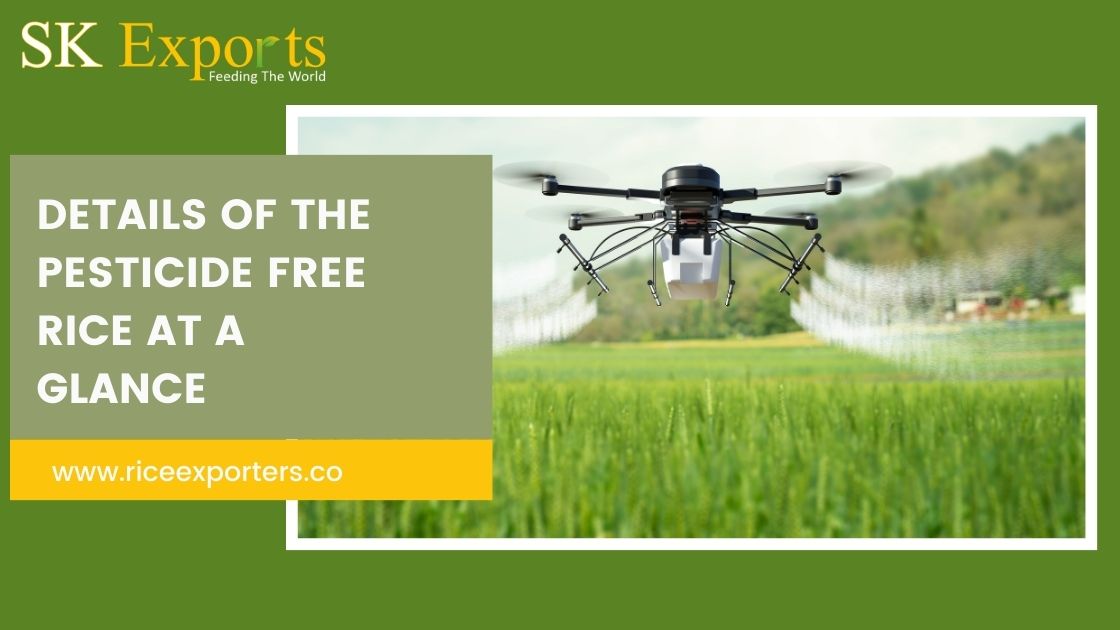Introduction:
In today’s health-conscious world, consumers are increasingly seeking out food products that are not only nutritious but also free from harmful chemicals. One such staple that has garnered attention is rice, a dietary cornerstone for millions worldwide. In this comprehensive guide, we delve into the nuances of pesticide-free rice, exploring its benefits, production methods, and why it’s a superior choice for your health and the environment.
Understanding Pesticide-Free Rice:
Pesticide-free rice, also known as organic rice, refers to rice that is cultivated without the use of synthetic pesticides, herbicides, or chemical fertilizers. Instead, farmers rely on natural methods and sustainable agricultural practices to nurture and protect their crops. By steering clear of harmful chemicals, pesticide-free rice offers a host of advantages, both for consumers and the ecosystem.
Benefits of Pesticide-Free Rice:
- Healthier Choice: Pesticide-free rice eliminates the risk of chemical residue in your food, safeguarding your health and well-being. By opting for pesticide-free varieties, you can enjoy rice in its purest form, free from potentially harmful substances.
- Environmental Sustainability: Conventional rice farming often involves the indiscriminate use of pesticides, which can pollute soil, water, and air. Pesticide-free rice production, on the other hand, promotes eco-friendly farming practices, preserving biodiversity and minimizing environmental degradation.
- Nutritional Superiority: Studies suggest that pesticide-free rice may contain higher levels of essential nutrients compared to its conventional counterparts. By nurturing soil health and promoting natural growth processes, pesticide-free farming enhances the nutritional profile of rice, offering consumers a more wholesome product.
- Supports Local Farmers: Choosing pesticide-free rice supports small-scale farmers who prioritize sustainable agriculture. By opting for these varieties, consumers contribute to the livelihoods of rural communities and promote ethical farming practices.
- Reduced Health Risks: Exposure to pesticides has been linked to a myriad of health issues, including respiratory problems, neurological disorders, and certain types of cancer. By consuming pesticide-free rice, individuals can mitigate these risks and protect their long-term health.
Production Methods:
Producing pesticide-free rice involves a departure from conventional farming techniques, embracing natural solutions and holistic approaches to pest management. Some common practices employed in pesticide-free rice cultivation include:
- Crop Rotation: Rotating rice with other crops helps break pest cycles and maintain soil fertility, reducing the need for chemical interventions.
- Biological Pest Control: Introducing natural predators and beneficial organisms helps control pest populations without resorting to synthetic pesticides.
- Companion Planting: Planting complementary crops alongside rice can deter pests and enhance overall crop health, reducing the reliance on chemical pesticides.
- Organic Amendments: Using organic fertilizers and soil amendments enriches soil quality, fostering robust plant growth and resilience against pests and diseases.
| Production Method | Description |
|---|---|
| Crop Rotation | Rotating rice with other crops helps break pest cycles and maintain soil fertility. |
| Biological Pest Control | Introducing natural predators and beneficial organisms helps control pest populations. |
| Companion Planting | Planting complementary crops alongside rice can deter pests and enhance overall crop health. |
| Organic Amendments | Using organic fertilizers and soil amendments enriches soil quality, fostering robust plant growth. |
Health and Nutritional Aspects:
Pesticide-free rice not only offers environmental benefits but also boasts superior nutritional qualities. Here are some key aspects to consider:
- Rich in Essential Nutrients: Organic rice tends to have higher levels of essential nutrients such as vitamins, minerals, and antioxidants compared to conventionally grown rice. This is attributed to the healthier soil conditions and natural farming practices employed in pesticide-free cultivation.
- Lower Toxic Residue: By avoiding synthetic pesticides and chemical fertilizers, pesticide-free rice minimizes the presence of toxic residues in the grains, ensuring a safer and more wholesome product for consumers.
- Enhanced Digestibility: Some studies suggest that pesticide-free rice may be easier to digest, thanks to its natural cultivation methods and lack of chemical additives. This makes it an ideal choice for individuals with sensitive stomachs or digestive issues.
| Nutrient | Pesticide-Free Rice | Conventional Rice |
|---|---|---|
| Vitamin Content | Higher | Lower |
| Mineral Content | Higher | Lower |
| Antioxidants | Abundant | Limited |
| Fiber | Rich | Moderate |
Environmental Impact:
The environmental benefits of pesticide-free rice extend beyond individual health considerations. Here’s how organic rice cultivation contributes to a more sustainable food system:
- Soil Conservation: Organic farming practices such as crop rotation, composting, and cover cropping help maintain soil structure and fertility, reducing erosion and promoting long-term soil health.
- Water Conservation: Pesticide-free rice cultivation typically requires less water compared to conventional methods, as organic soils have higher water retention capacity. This helps conserve freshwater resources and mitigates the impact of water scarcity on agriculture.
- Biodiversity Preservation: By eschewing chemical inputs, pesticide-free rice farming creates a more hospitable environment for beneficial insects, birds, and native plants. This fosters biodiversity and ecosystem resilience, enhancing the overall health of agricultural landscapes.
Economic and Social Considerations:
The shift towards pesticide-free rice production has significant implications for farmers, consumers, and communities at large:
- Fair Trade Practices: Many pesticide-free rice producers adhere to fair trade principles, ensuring that farmers receive fair compensation for their labor and resources. This promotes economic equity and empowers small-scale producers in developing regions.
- Community Development: Pesticide-free rice farming often involves community-based initiatives and cooperative models, fostering solidarity and collective decision-making among farmers. This strengthens local economies and promotes social cohesion in rural areas.
- Food Security: By diversifying agricultural practices and prioritizing sustainable farming methods, pesticide-free rice production contributes to food security by reducing dependence on chemical inputs and promoting resilience to climate change-related challenges.
Conclusion:
In conclusion, pesticide-free rice offers a multitude of benefits, ranging from improved health outcomes to environmental sustainability and social responsibility. By choosing pesticide-free varieties, consumers can make a positive impact on their health, support ethical farming practices, and contribute to a more sustainable food system. Embracing pesticide-free rice is not just a dietary choice but a commitment to health, sustainability, and the well-being of future generations.
